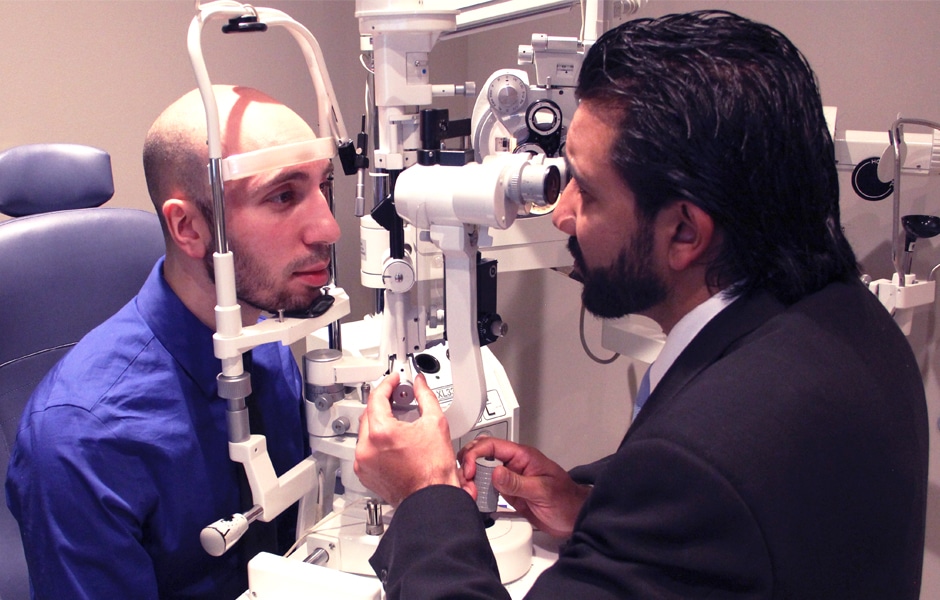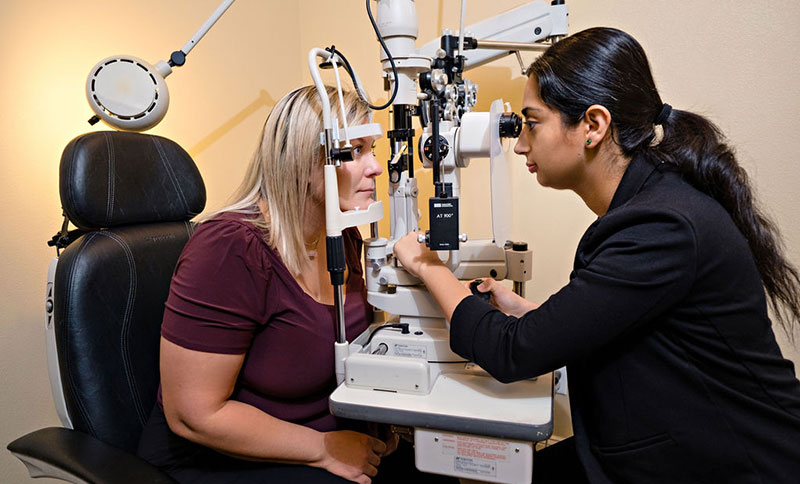Trusted Eye Doctors in Andalusia: Your Vision Health Specialists
Trusted Eye Doctors in Andalusia: Your Vision Health Specialists
Blog Article
Understanding the Various Vision Adjustment Procedures Available for Clearer View
In the world of vision correction procedures, a plethora of options exist to address refractive errors and offer people with more clear view. From the extensively recognized LASIK surgical procedure to much less intrusive procedures like PRK and implantable lenses, the field of ophthalmology uses a series of techniques tailored to suit different demands and preferences. Each treatment features its own set of factors to consider, benefits, and prospective dangers. Comprehending the subtleties of these vision improvement techniques is vital for making informed choices regarding one's visual wellness. Allow's check out the intricacies of these treatments and clarified the course to achieving improved vision quality.
LASIK Surgical Treatment
LASIK surgical procedure is a typical refractive treatment utilized to deal with vision troubles such as astigmatism, nearsightedness, and farsightedness. This surgical technique, which stands for Laser-Assisted in Situ Keratomileusis, aims to improve the cornea to boost how light is concentrated on the retina, inevitably boosting vision clarity.
One of the primary advantages of LASIK surgical treatment is the quick improvement in vision experienced by people. Lots of individuals observe a substantial enhancement in their sight right away after the procedure. In addition, the majority of patients report very little pain and pain throughout the surgical procedure and healing period. The recovery time for LASIK is fairly quick, with lots of individuals returning to their everyday tasks within a day or 2 post-operation. Overall, LASIK surgical treatment is a prominent selection for individuals seeking a long-term service for their vision problems.
PRK Treatment

PRK is an appropriate option for individuals with thin corneas or those at a higher risk of eye injuries, as it does not include producing a corneal flap. The recovery procedure for PRK is slightly longer contrasted to LASIK, as the epithelium needs time to regrow. Clients might experience pain and blurred vision for a few days complying with the procedure.
Despite the longer healing time, PRK can produce superb cause vision improvement, making it an important alternative for those that might not appropriate candidates for LASIK surgical procedure. - Eye Center Andalusia
Implantable Lenses
In comparison to PRK where the cornea is improved directly, implantable lenses provide another method for dealing with vision by inserting fabricated lenses inside the eye. This procedure is particularly advantageous for people with high degrees of nearsightedness, farsightedness, or astigmatism who may not appropriate prospects for laser surgical procedures like LASIK or PRK.
Implantable lenses, likewise called phakic intraocular lenses, job by supplementing the eye's all-natural lens with a fabricated one. These lenses can be positioned before the natural lens (anterior chamber) or behind the iris and in front of the natural lens (posterior chamber) By adjusting the power and positioning of these lenses, ophthalmologists can properly correct refractive errors and improve aesthetic acuity.
One advantage of implantable lenses is that they are detachable and exchangeable, offering flexibility for future changes. However, as with any kind of surgical treatment, there are risks entailed, such as infection or cataract development. Patients taking into consideration implantable lenses must seek advice from with click for source an eye care specialist to establish the most appropriate choice based on their private demands and eye health and wellness.
Corneal Rings

The procedure for inserting corneal rings is minimally intrusive and reasonably fast, frequently performed as an outpatient procedure. During the surgery, the eye doctor makes a little cut in the cornea and inserts the rings at a particular deepness. As soon as in position, the rings assist to reshape the cornea, providing a smoother surface for light to enter the eye, which can cause more clear vision.
Corneal rings are considered a reversible procedure, as they can be removed or changed if needed. While they might not entirely remove the requirement for glasses or call lenses, corneal rings can considerably improve vision top quality and general visual comfort for individuals with keratoconus or other corneal irregularities.
Refractive Lens Exchange
Following the correction of corneal irregularities with procedures like corneal rings, one more vision correction strategy that can deal with refractive errors is Refractive Lens Exchange (RLE) RLE is a procedure that involves changing the eye's all-natural lens with a fabricated intraocular lens (IOL) to fix refractive errors such as presbyopia, farsightedness, and nearsightedness. This treatment is particularly valuable for individuals who may not appropriate prospects for treatments like LASIK or PRK because of look at this site variables such as slim corneas or high refractive mistakes.
RLE belongs to cataract surgical treatment, as both involve eliminating the eye's natural lens; nonetheless, in RLE, the lens you can try these out is clear, not gloomy as in cataracts. The man-made lens dental implanted during RLE can be customized to address the individual's certain refractive mistake, giving clear vision at different distances. Recovery time for RLE is fairly quick, and people can anticipate enhanced vision soon after the procedure. Similar to any surgery, prospective dangers and issues exist, so a comprehensive consultation with an eye care expert is essential to establish if RLE is the appropriate vision modification choice.
Final Thought

In the realm of vision improvement treatments, a wide range of alternatives exist to resolve refractive mistakes and provide people with clearer sight.LASIK surgical procedure is an usual refractive treatment utilized to correct vision troubles such as astigmatism, farsightedness, and nearsightedness.While additionally a typical refractive treatment, the PRK (Photorefractive Keratectomy) method varies from LASIK surgical procedure in its technique to remedying vision issues.Adhering to the adjustment of corneal abnormalities with treatments like corneal rings, an additional vision modification method that can address refractive errors is Refractive Lens Exchange (RLE) LASIK surgery, PRK treatment, implantable lenses, corneal rings, and refractive lens exchange are all options that can address various vision problems.
Report this page